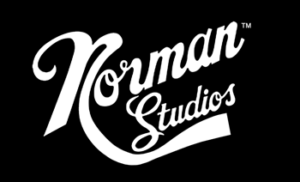
*On this date in 1919, we celebrate the founding of the Norman Film Manufacturing Company.
Norman Studios was an American film studio in Jacksonville, Florida. Richard Edward Norman founded it, and from 1919 to 1928, it produced silent films featuring African American casts. The only surviving studio from early film-making in Jacksonville, its facilities are now the Norman Studios Silent Film Museum.
One of the most prominent studios creating films for Black audiences in the silent era, Norman's films featured all-Black casts with protagonists in positive roles. During its run, it produced eight feature-length films and numerous shorts; its only surviving film, The Flying Ace, has been restored by the Library of Congress. During the early 20th century, the emerging film industry, traditionally located in New York, built a new home in Northeast Florida to continue filming during the winter. Jacksonville, home to over thirty silent film studios from 1908 – 1922, became known as the "Winter Film Capital of the World."
Eagle Film Studios, which would later become Norman Studios, was built in 1916. The five buildings composing the studio went bankrupt in the following years. During the time, films with a Black cast and shown specifically to Black audiences were known as "race films." Norman Studios produced several of these films during the 1920s. Richard Norman's reason for producing race films was not solely a business decision. Although the studio was filling a niche, Norman was also motivated by the state of race relations at the time. The untapped black film patron market and the plethora of talented performers unable to get work in mainstream films lead to the production of race films by Norman Studios.
Films produced by Norman Studios include Green-Eyed Monster (1919), a railroad drama; The Love Bug (1919), a comedy; The Bull-Dogger (1921), a western; The Crimson Skull (1922), another western; Regeneration (1923), an action-adventure set on an island after a shipwreck; The Flying Ace (1926), Norman's most famous film; and Black Gold (1928), a drama set around the oil business. Norman Studios' run as a producer of race films came with the advent of talking movies. Richard Norman invested and developed a system to sync audio to the moving images. Units were sold to theaters nationwide, but a new method of putting sound on film debuted, making Norman's system obsolete.
Filmmakers were already steadily exiting southern California, which emerged as a new hub for films. In 1917, John W. Martin was elected mayor of Jacksonville on an anti-film campaign intending to curb the wild excesses of the film industry. Filmmakers did not help their cause by filming car chases on the streets on Sundays, pulling alarms to film fire trucks, or accidentally inciting riots. By the 1930s, the film industry had moved on from Jacksonville, where Norman Studios became a distributor of films. Richard Norman began exhibiting films in the 1940s. The studio transitioned to distribution and promotion after talking pictures rose, making its technology obsolete and eventually closing. On October 31, 2016, the location and studio's facilities were restored and re-purposed as a museum and were designated a National Historic Landmark.